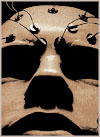Seizure after Brain Injury
When people think seizure, they typically think grand mal seizures, the type where people collapse into convulsions. However, seizure activity encompasses a wide spectrum of abnormal electrical and chemical activity within the brain. The below article provides an explanatory model of this wide range of symptoms, which often is seizure after brain injury.

Characteristics and mechanisms of epilepsy spectrum disorder:
Abstract Recently, a complex neurobehavioral disorder with paroxysmal affective, psycho sensory, and cognitive symptoms has been described by a number of different neuropsychiatric and neuropsychological practitioners. Although a variety of different terms have been used to characterize this clinical entity, the recently coined term epilepsy spectrum disorder (ESD) will be used for the purposes of this article. The clinical identification, neuropsychological characteristics, differential diagnosis, etiology, and treatment responses of such patients will be reviewed. The possible neuropathological and neurophysiological mechanisms underlying ESD and implications for future research will be discussed. It is argued that neuropsychologists should be more familiar with this syndrome because such patients are frequently referred for neuropsychological assessment when practitioners from medical disciplines are confused by the atypical polysymptomatic clinical presentations of ESD patients.
Applied Neuropsychology, 1995: 2: 1-6 © Munksgaard, 1995. Accepted January 25, 1995.
Within the past decade, an increasing number of clinical neurobehavioral studies have described patients who present with multiple paroxysmal affective, psychosensory, and cognitive complaints (Blumer et al. 1998, Goldstein 1984, Neppe & Kaplan 1988, Richardson et al. 1989, Springer et al. 1991, Trucker et al. 1986, Verduyn et al. 1992, Zappala & Cameron 1990). A number of different terms have been used to describe various aspects of this polysymptomatic clinical presentation: complex partial seizures (Tucker et al. 1986), subclinical seizures (Sperling & O’Connor 1990), atypical psychosis (Neppe 1991), episodic dyscontrol (Monroe 1970), post-traumatic temporal lobe dysfunction (Zappala & Cameron 1990), multiple partial seizure-like symptoms without stereotyped spells (Verduyn et al. 1992), temporal lobe syndrome (Blumer et al. 1988), subictal neurosis (Jonas 1965), a subtype of treatment-resistant affective disorder (Hayes & Goldsmith 1991, Varney et al. 1993), or temporolimbic instability. For the purpose of this review, the term epilepsy spectrum disorder (ESD), recently proposed (Roberts et al. 1992) will be used to describe these patients who experience multiple episodic or partial seizure after brain injury like symptoms.
Epilepsy Spectrum Disorder (ESD)